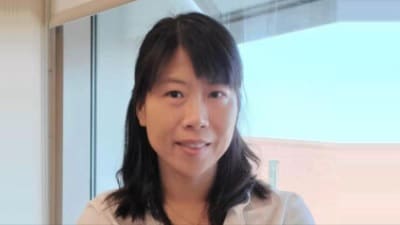
PISCATAWAY, N.J.–(BUSINESS WIRE)–IEEE, the world’s largest technical professional organization dedicated to advancing technology for humanity, and the IEEE Engineering in Medicine and Biology Society (EMBS), today announced the incoming appointment of Professor He (Helen) Huang as editor-in-chief of IEEE Transactions on Neural Systems and Rehabilitation Engineering (TNSRE). Her duties will commence on January 1, 2024.
Dr. Huang’s research focuses on neural-machine interfaces, prosthetic and exoskeleton control, human-robot interaction, and human movement control. She has more than 15 years of experience as a professor, and currently teaches at the University of North Carolina Chapel Hill and North Carolina State University. She is the Jackson Family Distinguished Professor within the Joint Department of Biomedical Engineering (BME) of both universities, and is the director of the Closed-Loop Engineering for Advanced Rehabilitation core. Dr. Huang also co-founded AVEX Motion, in 2022, a spin-off of her research lab work in wearable robotics and rehabilitation at the Joint Department of BME.
“As we look ahead to Dr. Huang’s stewardship of IEEE TNSRE, we anticipate an exciting chapter of growth, innovation, and impactful research,” said Paul Sajda, Ph.D., president of the IEEE EMBS. “Her remarkable achievements throughout the course of her career as a researcher, author, and associate editor give us confidence in her tenure at the journal.”
Dr. Huang earned her M.S. and Ph.D. in biomedical engineering from Arizona State University. She has earned numerous accolades, including the Delsys Prize for Innovation in Electromyography, the Mary E. Switzer Fellowship with NIDRR (now NIDILRR), the NSF CAREER Award, the ASA SPES Award, and the ALCOA Foundation Distinguished Engineering Research Award. She is a distinguished fellow of AIMBE, IEEE and a member of many other esteemed organizations.
“I aspire to improve the lives of people with disabilities by creating the symbiotic relationship between people with limb loss and robotic prostheses in my own research,” said Dr. Huang. “As editor-in-chief of TNSRE, I want to amplify the voices of my colleagues in the neural systems and rehabilitation engineering fields, and illuminate the importance of this work. I look forward to working with the editors and the team at IEEE TNSRE in accomplishing the missions of the journal and the society, and providing quality, field-leading research to our peers.”
About the IEEE Engineering in Medicine and Biology Society
The IEEE Engineering in Medicine and Biology Society (EMBS) is the world’s largest international society of Biomedical Engineers. With more than 9,500 members residing in some 97 countries around the world, it’s a true global connection, providing access to the most fascinating people, practices, information, ideas, opinion and fellowship from one of science’s fastest growing fields: biomedical engineering. From formalized mathematical theory through experimental science, from technological development to practical clinical applications, IEEE EMBS members support scientific, technological, and educational activities as they apply to the concepts and methods of the physical and engineering sciences in biology and medicine. By working together, we can transform and revolutionize the future of medicine and healthcare. For more information about the IEEE EMBS, please visit www.embs.org.
















